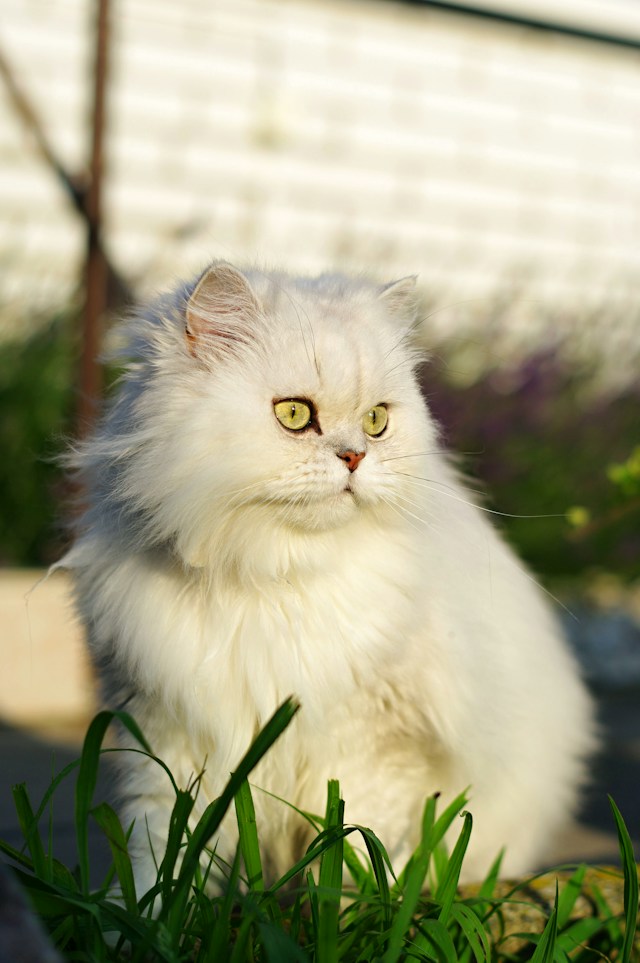Sporting chubby cheeks, long coat, and snub noses, the Persian cat is an elegant breed, exuding an air of nobility and dignity. It is revered for its exquisite looks and sweet and docile temperament, enjoying being held, warming up on their master’s lap, or lounging around their lovely homes. And, while this feline is very affectionate, it will not be fussy in terms of attention. Combining all those traits, no wonder this cat has been considered a pillar in cat shows and an adorable mainstay in many types of homes.
Origin of the Persian Cat
Like most ancient feline breeds, the roots of the Persian cat is somewhat shrouded with mystery. As early in the 1500s, longhaired cats were being imported from Asia to Italy. However, in the 17th century, the Italian traveler Pietro della Valle took a cat from Persia (modern-day Iran) and brought it to Italy to incorporate it into the feline crossing program.
It was believed that said cat was a Sand Cat or Sand Dune Cat, which thrives in Persia’s sandy and stony deserts. The small wild cat also possesses a wooly coat, but is harder to touch, keeping her protected from the harsh environment in their chosen habitat.
A hundred years later, the Italian cats were then bred to Turkish cats and marked the Persian cats’ birth. The Persian catapulted into popularity when Queen Victoria and other nobles fell in love with the glamorous feline breed. In fact, the Persian was seen at the very first cat shows in that Victorian Britain. These felines soon reached the United States and became a famous breed towards the end of the 19th century. Now, Persian cats are still deemed as the most popular cat by many cat registries.
Physical Characteristics of the Persian Cat
Length: 14 to 18 inches, excluding the tail
Weight: 9 to 14 pounds (Males), 7 to 11 pounds (Females)
Life Expectancy: 10 to 15 years
Coat Color: White, red, black, blue, chocolate, lilac, cream
Type of Coat: Long, thick, and glossy
Eye Color: Blue, green, copper, hazel, odd-eyes
The Persian cat is a fairish-sized cat, with heavy boning. However, given its massive, full, long, glossy, and lustrous coat, this feline appears larger than it really is. While it looks exquisite, the Persian seems to have an odd structure. Its body is relatively short, thick, with also a short, thick neck, and even thick legs. Meanwhile, both the head and eyes are roundish. The ears are small, and the tail is short. When viewed from the sides, its face seems flat, while the nose is stubby and slightly turned up.
Persian Cat Personality
Persian cats are renowned for their quiet, sweet, and docile demeanor. They make great pets to any home but expect them to be regal. These cats value their dignity and will be happy to engage with people who merit their majestic persona.
With that, they would not mind receiving tea at a kid’s party, being combed gently, or being wheeled around the house while in a baby buggy.
However, their affection and attention can be discriminating. They only confer both to people they feel they can bank on, which means their owners should win their hearts and trust. Once their master’s win they over, these cats will shower them with affection, without pestering for attention. However, they won’t hesitate to display their feelings if they do not receive an ample amount of love they need in return.
In terms of energy, Persian cats don’t turn into hyperactive active creatures. They are unlikely to jump on kitchen counters, be on the top of the refrigerator, or climb up the curtains. Instead, these felines will be content lurking nobly on the floor or to more reachable furniture pieces.
They are not totally passive, though. A little playtime using a feather teaser, or the catnip mouse, can work in these felines between their lounging sessions.
Caring for the Persian Cat
Persian cats are a high maintenance feline breed in terms of grooming. Their long, lustrous, and glossy coat must be brushed daily to keep it from tangling or matting. It doesn’t stay clean or doesn’t shed debris and dirt naturally, making mats and tangles possibly painful for these furballs. Regular bathing at least once each month can further help their fur stay in its tip-top condition and avoid such scenarios.
Other grooming requirements they need include eye cleaning and dental hygiene. Eyes should be cleaned daily to avoid any stain build-up on thick fur. Meanwhile, brushing their teeth daily is recommended, but weekly brushing may also suffice to maintain their oral health and avoid periodontal disease. Dental treats can be useful supplements, but should not be the only method of keeping these felines’ dental hygiene.
Persians are not among the most vigorous and frisky cat breeds. They will be happy to lounge around and look for cozy places where they can relax. With that, owners should ensure they get ample amounts of exercise daily. These cats typically have sudden bursts of energy and will be happy to play with balls, interactive toys, and the catnip mouse. It is best to take advantage of such opportunities for them to meet their daily exercise needs.
These cats are relatively slow to learn and are deemed not to be a very trainable feline. They tend to observe more rather than take part in any endeavor, which may require time, patience, and efforts from any family who would decide to train them.
While elegant and sweet, Persian cats have quite a few health issues that pose concerns, such as hypertrophic cardiomyopathy, polycystic kidney, disease, bladder stones, breathing difficulties, and excessive tearing. Consulting with the vet regularly is an excellent way to rule out any condition and help these adorable cats live a long, healthy life.
Persian cats are best for families, who would acknowledge their air of dignity and nobility. Once their hearts are won, these cats are set to shower their affection, return all the attention and dedication given to them a tenfold.

